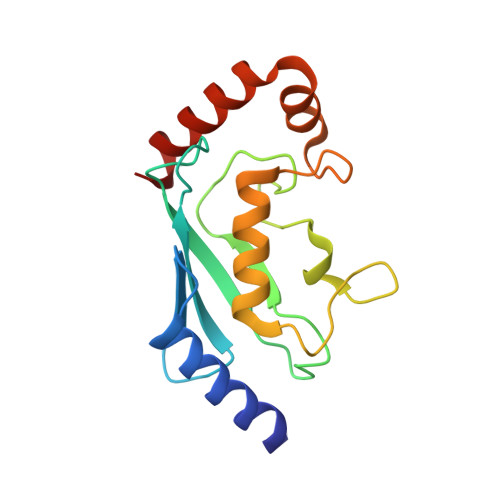Identification of small-molecule binding sites of a ubiquitin-conjugating enzyme-UBE2T through fragment-based screening.
Loh, Y.Y., Anantharajan, J., Huang, Q., Xu, W., Fulwood, J., Ng, H.Q., Ng, E.Y., Gea, C.Y., Choong, M.L., Tan, Q.W., Koh, X., Lim, W.H., Nacro, K., Cherian, J., Baburajendran, N., Ke, Z., Kang, C.(2024) Protein Sci 33: e4904-e4904
- PubMed: 38358126
- DOI: https://doi.org/10.1002/pro.4904
- Primary Citation of Related Structures:
8JUC, 8JVD - PubMed Abstract:
UBE2T is an attractive target for drug development due to its linkage with several types of cancers. However, the druggability of ubiquitin-conjugating E2 (UBE2T) is low because of the lack of a deep and hydrophobic pocket capable of forming strong binding interactions with drug-like small molecules. Here, we performed fragment screening using 19 F-nuclear magnetic resonance (NMR) and validated the hits with 1 H- 15 N-heteronuclear single quantum coherence (HSQC) experiment and X-ray crystallographic studies. The cocrystal structures obtained revealed the binding modes of the hit fragments and allowed for the characterization of the fragment-binding sites. Further screening of structural analogues resulted in the identification of a compound series with inhibitory effect on UBE2T activity. Our current study has identified two new binding pockets in UBE2T, which will be useful for the development of small molecules to regulate the function of this protein. In addition, the compounds identified in this study can serve as chemical starting points for the development of UBE2T modulators.
Organizational Affiliation:
Experimental Drug Development Centre (EDDC), Agency for Science, Technology and Research (A*STAR), Singapore, Singapore.



















